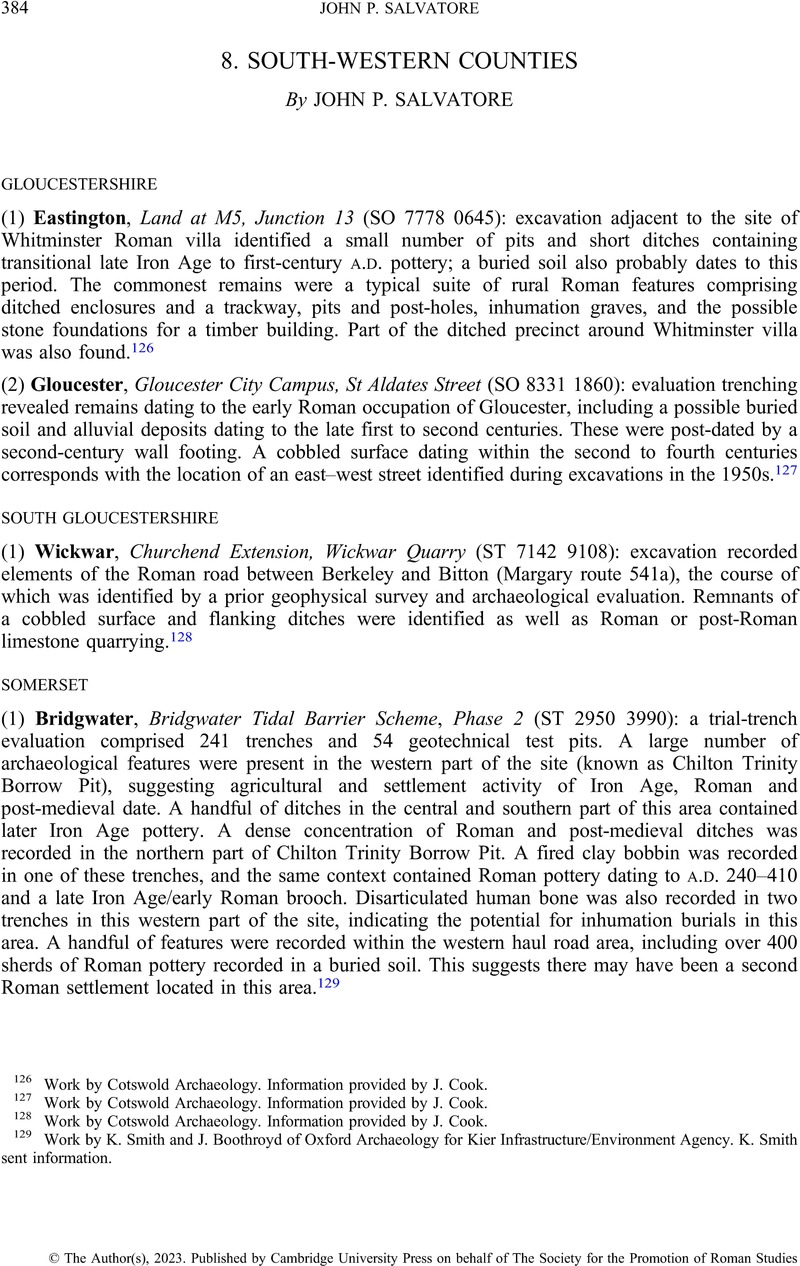No CrossRef data available.
Article contents
8. SOUTH-WESTERN COUNTIES
Published online by Cambridge University Press: 24 November 2023
Abstract

- Type
- Roman Britain in 2022
- Information
- Copyright
- Copyright © The Author(s), 2023. Published by Cambridge University Press on behalf of The Society for the Promotion of Roman Studies
References
126 Work by Cotswold Archaeology. Information provided by J. Cook.
127 Work by Cotswold Archaeology. Information provided by J. Cook.
128 Work by Cotswold Archaeology. Information provided by J. Cook.
129 Work by K. Smith and J. Boothroyd of Oxford Archaeology for Kier Infrastructure/Environment Agency. K. Smith sent information.
130 Salvatore, J.P., Kaye, S., Stocker, S. and Toller, H., ‘Observations on the Roman Road between Exeter, North Tawton and Okehampton’, Proceedings of the Devon Archaeological Society 77 (2019), 297–319Google Scholar.
131 Britannia 50 (2019), 449–51.
132 S. Kaye, J.P. Salvatore, S. Stocker and H. Toller, ‘Reappraisal of proposed Roman road from Gunstone Cross to Half Moon Village (Newton St Cyres)’, Devon and Dartmoor HER record MDV132948 (2022).
133 S. Kaye provided information.
134 M. Roseveare and S.R. Taylor, A391 St Austell to A30 Link Road, Cornwall, Geophysical Survey Report (2018).
135 Work by Cornwall Archaeological Unit for Griffiths Ltd. S.R. Taylor provided information.
136 Work by Cornwall Archaeological Unit for Griffiths Ltd. S.R. Taylor provided information.


